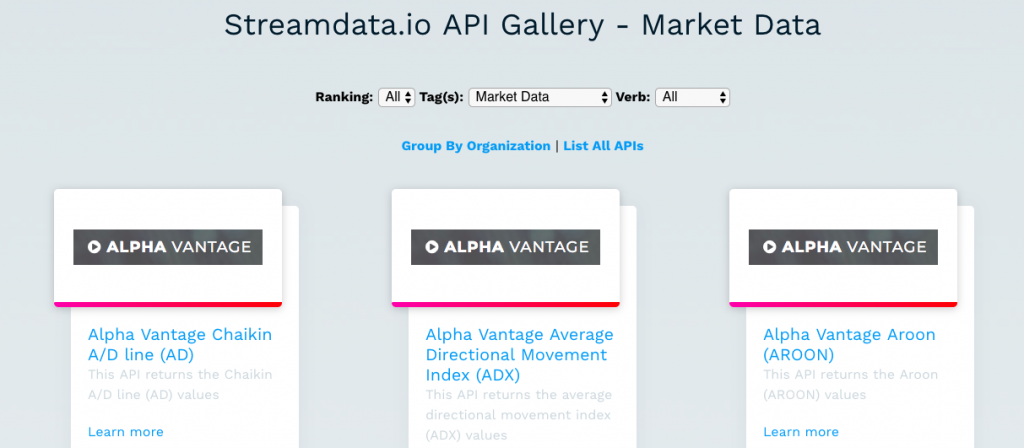Streamdata.io’s announced yesterday the updated API Gallery. It now includes 397 API Gallery topics. With 9850 API paths available across these topics. We have accumulated these topics by profiling the APIs across 285 API providers. Some of them are across different lines of business from large API providers like AWS, Azure, and Google, but many of the others are from a variety of independent API providers like Twilio, Stripe, and others. Providing a rich catalog of APIs across the 397 topics we have so far.
We knew that these API Gallery topics would provide a good way to discovery APIs, allowing our customers to find valuable resources. However, we didn’t think it would also provide some really unique ways to discover new concepts, and API resources we hadn’t even considered. Providing a new way to profile and discover APIs, but also a novel way to identify the event-driven potential across the existing API space, which would allow our customers to publish and subscribe to exactly the types of resources they are looking for. The topics are quickly becoming a way to mine the valuable API resources that already exist across the landscape, and as we break down the resources offered by each provider, the topic areas continue to expand, and the different types of API resources available within them will continue to increase.
To profile APIs we are using the OpenAPI specification, which allows us to define the paths, parameters, and other details of each provider’s APIs. As we profile the APIs we tag them based upon the type of resource, as well as the verbs that are used (ie. POST, GET). Which combine to tell us what the unique publish (POST) and subscribe (GET) opportunities that are available, with each tag describing the topic in play. Which has us pretty excited to keep profiling APIs, and properly applying tags to each path. Expanding on the Streamdata.io API Gallery, and increasing the number of topics available for our customers to consider when they are looking for valuable streams to tap into, and apply in the web and mobile applications they are building, as well as feeding into the machine learning models they are putting to work across their operations.
